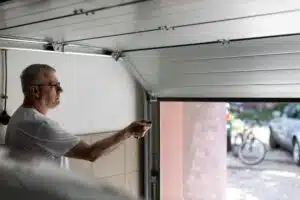A car is a major investment and can be tough to live without. Getting to work, the supermarket, and other stores are made much easier when you own a motor vehicle. Naturally, you want to protect that investment and that is where a garage comes in handy.
A structure for storing your car keeps it out of the elements, protecting the paint and undercarriage from dirt and rust. A garage is also a great place for storing tools and other things you don’t want to keep in the house. Like any other building, a garage must have a door to get in and out. A garage door must be big enough to let a car move through, so the door is larger and operated differently.
The Garage Door Springs
Most garage doors open and close by rolling up on a track and sitting beneath the ceiling. The doors have small wheels attached to the sides that roll on the tracks. Whether the door operates manually or is automatic, it cannot function without the springs. There is one on each side and they serve to pull the door upward when it is unlatched.
Two Types of Springs
There are two different types of springs that are used for garage doors. They are extension springs and torsion springs.
Extension Springs
Extension springs are mounted on the top of the tracks where they sit beneath the roof. They extend when the door is opened, providing a counterbalance to the weight of the door. Extension springs have a safety cable attached in case one breaks.
An extension spring may break if it becomes rusted or overextended. A bracket might also break free. The spring can cause injury to people or damage to the car, garage, or contents. The safety cable prevents the spring from flying free.
Torsion Springs
The other type is the torsion spring. These are more commonly used and as the name implies, work using torsion, or twisting force. The springs are mounted around a shaft and as the garage door is opened or closed, they twist around the shaft. The spring supplies force to make sure the door opens and closes smoothly and stays in position.
Torsion springs can also rust which weakens them and can eventually cause a break. Wear and tear over time can also weaken a torsion spring and cause it to malfunction.
Broken Springs
Whichever type of springs your garage door has, breaking is not uncommon, especially for older springs. If one does break, your garage door will not be functional and will remain in whichever position it was in when the spring broke. At that point, it’s time to call a garage door company to replace the spring. It’s a fairly easy job and your door will be good as new quickly.
A garage is the best place to store your car and without a functional door, it won’t protect your car. If a spring should break or if you have any other problems, contact Bayside Garage Doors at (727) 408-7636 for expert repair service or to install a new door.








